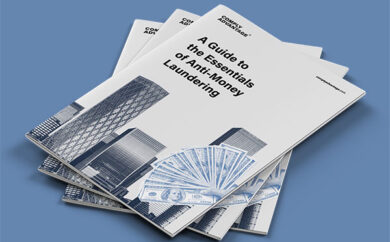Banking professionals understand the importance of their companies’ reputations. Research by media communications specialists Weber Shandwick found that global executives attribute 63 percent of their company’s market value to its reputation.
Yet, unexpected events and resulting bad news can quickly damage a bank’s reputation and stock value. 12.6% of sudden plunges in stock prices are attributable to reputational issues, according to research from business consultancy Oliver Wyman. So why are so few firms taking adequate steps to protect their reputations? Even large organizations can be caught off-guard and suddenly find themselves managing events reactively.
Managing reputational risk is a complex and ongoing discipline in the banking industry. Regulations, digital innovation, the internet, sanctions, cybersecurity, and data breaches converge with rising levels of financial crime and fraud to create a unique risk landscape that is difficult to manage.
Financial crime risk is heavily regulated from a money laundering and terrorist financing perspective. US banks that are governed by the Bank Secrecy Act and regulated by FinCEN are obliged to implement a rigorous control framework to protect customers and other stakeholders from the instability caused by the misuse of the financial system by criminals and terrorists.
Yet, the history of fines in the USA imposed on banks for failure to implement adequate anti-money laundering (AML) controls over the past decade reveals a story of widespread failure to protect the organization and its reputation. Inadequate customer due diligence points to the need for greater use of adverse media screening than banks have used historically.
Few banks escape the attention of the regulator, and with tougher anti-money laundering regulations being introduced, the risks of getting it wrong increase even more. How can banks manage these reputational risks? In short, Know Your Customer (KYC) processes need to evolve rapidly to embrace AI technology and data analytics to implement a true risk-based approach.
Adverse media screening has a central role in this in going beyond PEPs and sanctions checks to enable a bank to check if it has links to any customers, intermediaries, or correspondent banking relationships with possible connections to money laundering and terrorist financing. Drug trafficking, modern slavery, organized crime, illegal gambling, fraud, and much more – in every case, adverse media can be used to monitor such risks to protect the organization specifically.
FinCEN’s FAQ from January 2021 provides clear guidance that using adverse media alerts from screening can inform a risk concern and indicate that further investigation is needed to assess if suspicious activity is happening.
However, the first priority for any bank or financial institution is to understand which areas of the business are most exposed to reputational risks. This is a challenging exercise and requires a team approach and expert help. In addition, there needs to be a detailed understanding of financial crime typologies to help better recognize threats pre-emptively. That means building a deep understanding of the specific types of risk that can threaten a firm’s reputation. From this analysis, detailed adverse media screening controls can be implemented, specifically monitoring the identified categories of risk.
Money laundering manifests in many forms and the increasing sophistication of criminals and the use of technology, the dark web, and digital currencies places a greater burden on compliance teams to protect their firms from reputational risk.
The latest genre of adverse media solutions can extract data from multiple data sources across the entire web operating in real-time, bringing actionable risk intelligence into the customer’s world quickly and cost-effectively. Using pre-defined risk categories and keyword searches using natural language processing technology with in-built workflow tools has made what was hitherto impossible perfectly possible.
Banks and other financial institutions can now confidently design solutions that provide an effective defense from reputational risks not just with specific higher-risk customers but across the entire customer portfolio. Implemented effectively, adverse media can be the equivalent of a radar system sweeping the horizon to identify incoming threats before they materialize, enabling pre-emptive action.
As a result, organizations can now use adverse media cost-effectively as part of a rounded risk assessment across the business. Adverse media checks will routinely inform all customer risk assessments and improve the accuracy of resultant risk scores. This provides a much more comprehensive and informed view of potential risk at the onboarding stage.
There is no doubt that reputational risk exposure has become a strategic priority for all banking stakeholders, from the board of directors to employees, investors, and customers.
Maintaining financial stability, early identification of financial crime risk, and protecting customers and shareholders from losses is paramount. Innovative adverse media solutions now exist to help combat these threats, avoid fines and preserve a bank’s reputation.
Celent report: Maximizing the Value of Adverse Media Monitoring
For this report, leading research and advisory firm Celent interviewed global banks from across the world, providing practical tips on how adverse media can be integrated into an existing AML value chain.
Download now
To explore more about the practical benefits of adverse media for compliance teams, explore the pieces below:

